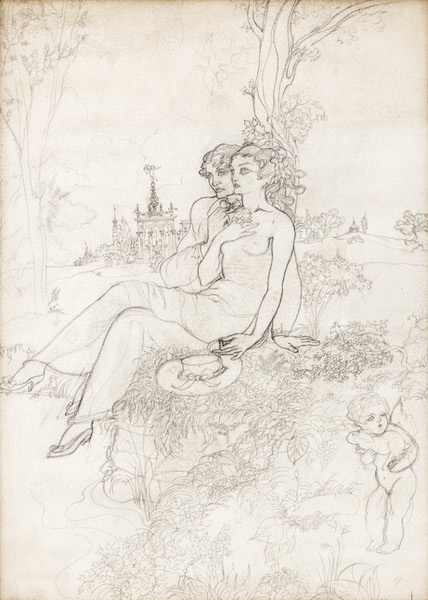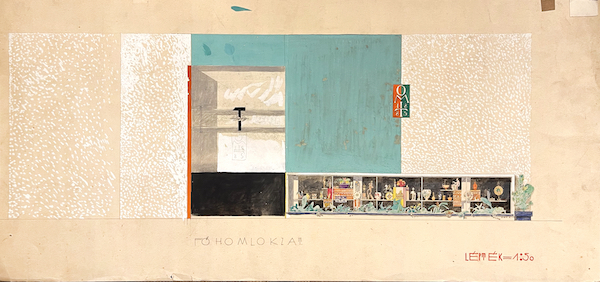Biography
His father, Pál Tálos, was a well-known furniture-carpenter at the turn of the century, vice-president of the Industrial Council, founder and director of the First Furniture Hall Cooperative. From 1903 to 1908, Gyula was a student of Ede Thoroczkay Wiegand at the School of Applied Arts and obtained a diploma in interior design. He then went on a three-year study trip to Vienna, Munich, Berlin, Brussels and Paris. Meanwhile, he also worked in the workshops of the Deutscher Werkbund and the Wiener Werk statten.
After returning home in 1910-1911, he worked as a decorator in architectural offices. In 1911-1913, he was an interior designer and decorator in the office of Béla Lajta, and then from 1913 to 1941, Béla Málnai. He was a Russian prisoner of war from 1915 to 1920. On the occasion of the 1917 celebrations, he participated in the decoration of the railway station in Vladivostok. In 1918, Japanese newspapers published his graphics and drawings. Another significant change in his life took place in Budapest after his return home. In 1921, after six years of absence, he met his old love, Ilona Dukai Takács, who became his muse for life.
From 1941 to 1948, he was an office manager in the office of the architect Csank (Rottmann) Elemér, and from 1948 to 1956 he worked in the high-rise construction department of the Középületzórző Vállalat. With its interior fittings, home furnishings, unique furniture, graphics, paintings with exotic colors, ex libris and goldsmith's work, it won numerous awards at architectural art tenders and exhibitions between the two world wars. In his work as an exhibition designer, the most outstanding are the folk art and applied arts exhibition organized by the Society of Applied Arts in Tallinn, Estonia in 1936, as well as the 1938 exhibition of the Society of Applied Arts, for which he designed the entire installation and managed the art management.
During his lifetime, in 1973, Gyula Tálos donated his drawing material to the Architecture Museum with the stipulation that it be presented in a large-scale exhibition, which took place in 1974.


